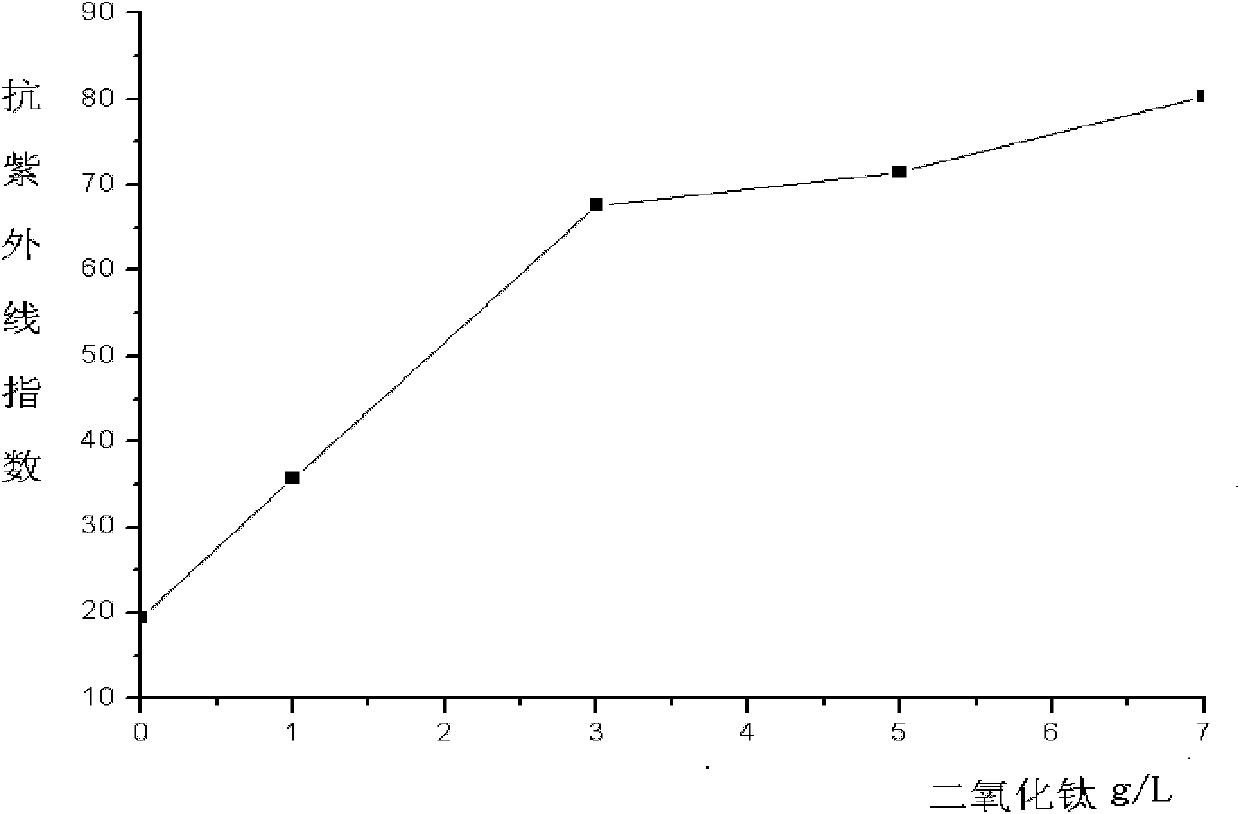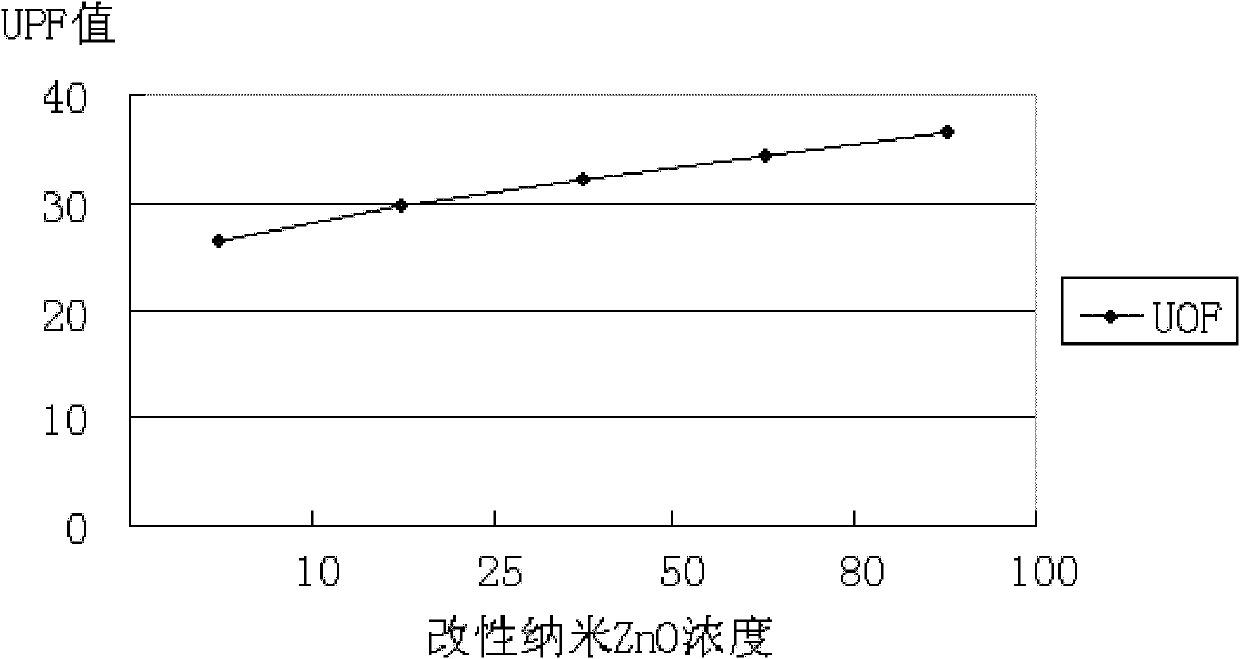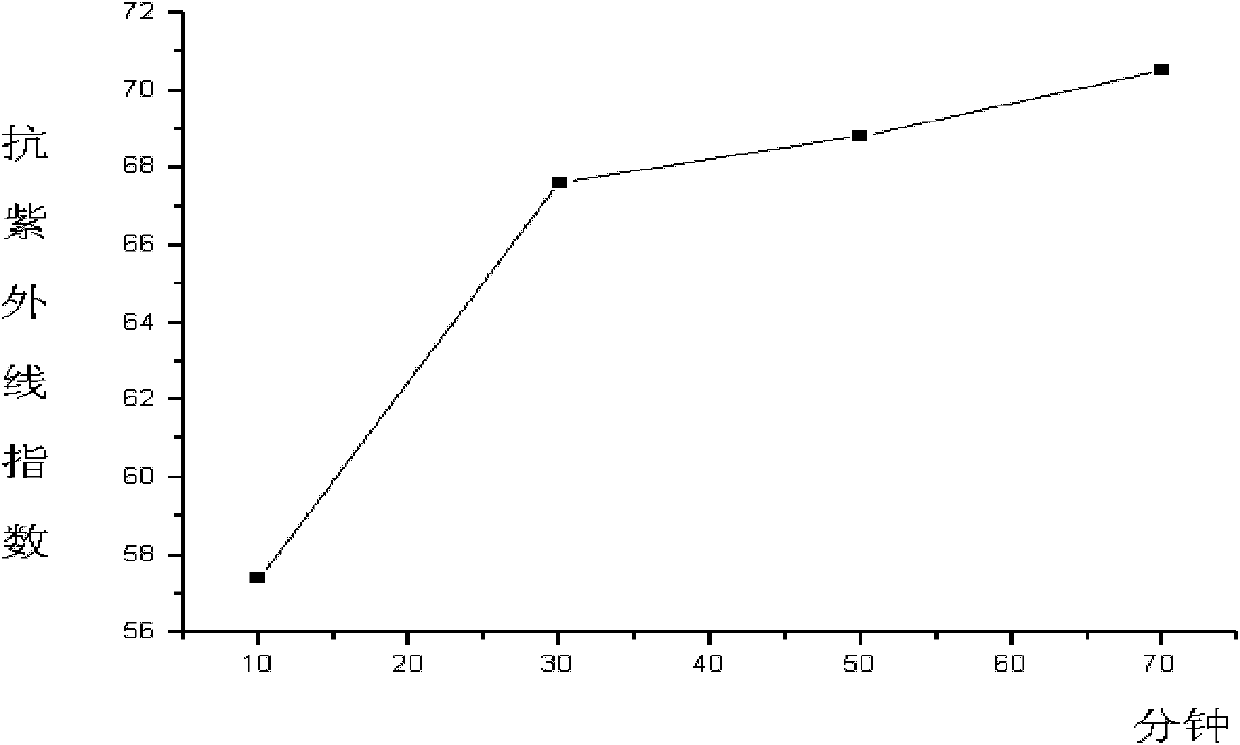Modified nano oxide, preparation method and application method of self-emulsifying dispersion liquid thereof
A nano-oxide, nano-zinc oxide technology, applied in natural fibers, textiles and papermaking, fiber processing, etc., can solve the problems of high cost, high resource consumption, environmental pollution, etc., achieve good dispersion, simple preparation process, overcome the Easy to drain effect
- Summary
- Abstract
- Description
- Claims
- Application Information
AI Technical Summary
Problems solved by technology
Method used
Image
Examples
Embodiment 1
[0053] 1. Preparation of prefabricated body:
[0054] Under the protection of nitrogen, dehydrate polyethylene glycol for 1.5h at 105°C under a vacuum of 100-150mmHg; cool down to 55-50°C, then slowly add diisocyanate and dibutyltin dilaurate, and heat up 80 ℃ for 2.5 hours to obtain the prepolymer B. The molar ratio of polyethylene glycol, diisocyanate and dibutyltin dilaurate is 2.05:1:0.0001;
[0055] 2. Modification process:
[0056] Raise the temperature of prepolymer B to 95°C, add nano-zinc oxide to react for 6 hours, cool down to 20-25°C, add absolute ethanol, then slowly add saturated sodium bisulfite solution, and react for 2 hours;
[0057] 3. Dispersion process:
[0058] The obtained modified nano-zinc oxide is dispersed in water through a high-speed disperser or an ultrasonic disperser to obtain a self-emulsifying dispersion of the modified nano-oxide. The weight percent of the modified nano-oxide self-emulsifying dispersion is 15%. Good dispersion stability,...
Embodiment 2
[0060] Except that the molar ratio of the isocyanate group (-NCO) to the polyethylene glycol (-OH) in the MDI is 1.4-2.2:1, the rest is the same as the first embodiment. The results are shown in Table 1:
[0061] Table 1:
[0062] N(NCO):n(OH)
Solution properties
1.4∶1
light yellow translucent
1.6∶1
yellow translucent
1.8∶1
yellow transparent
2.05∶1
yellow transparent
2.2∶1
flocculent
[0063] Shown by Table 1:
[0064] The molar ratio of isocyanate group (-NCO) to polyethylene glycol (-OH) in MDI seriously affects the properties of polyurethane modifiers containing terminal isocyanate groups (-NCO), which in turn affects the quality of nano-titanium dioxide finishing solution . When the molar ratio of NCO to -OH is closer to 1, the viscosity of the late system will be greater, the reaction will be more difficult to control, and the gel will be easier. The optimal molar ratio n(NCO):n(OH) is 2.05:1, ...
Embodiment 3
[0066] Except the temperature of prepolymer B, the reaction time, all the other are identical with embodiment one. The results are shown in Table 2:
[0067] Table 2: Effect of prepolymerization temperature and time on reaction
[0068] 30min
[0069] It can be seen from Table 2 that in the preparation of polyurethane modifiers containing terminal isocyanate groups (-NCO), if the temperature is too low, the isocyanate is not completely reacted, and free isocyanate monomers and polyols remain, resulting in incomplete reaction. As the temperature increases, the reaction rate of isocyanate and various active hydrogen compounds increases. If the temperature is too high, the end group -NCO is easy to form multi-point crosslinks with the -NH- or urea bonds on the polyurethane, resulting in a sharp increase in the relative molecular weight, an increase in the degree of branching, and gelation. The closer the reaction is to the end point, the closer the -NCO percentage i...
PUM
 Login to View More
Login to View More Abstract
Description
Claims
Application Information
 Login to View More
Login to View More - R&D
- Intellectual Property
- Life Sciences
- Materials
- Tech Scout
- Unparalleled Data Quality
- Higher Quality Content
- 60% Fewer Hallucinations
Browse by: Latest US Patents, China's latest patents, Technical Efficacy Thesaurus, Application Domain, Technology Topic, Popular Technical Reports.
© 2025 PatSnap. All rights reserved.Legal|Privacy policy|Modern Slavery Act Transparency Statement|Sitemap|About US| Contact US: help@patsnap.com



